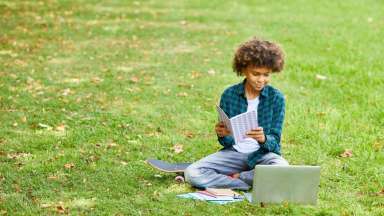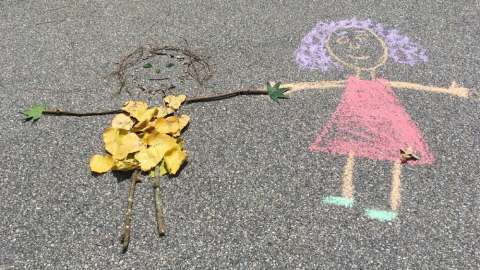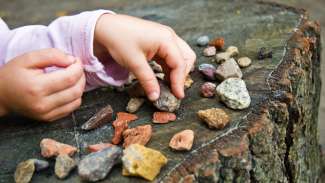The new school year has officially started and some students are signing onto a computer to receive instruction. It’s a very stressful time. Spending time in nature can help offset the drawbacks from two-dimensional online learning and have a calming effect on both children and their parents.
Recent research has focused on the effects of nature on ‘attentional functioning,' or the ability of a child to pay attention. In nature, we are free to let our attention wander, which may give the parts of the brain responsible for focus a chance to rest and recover. It should come as no surprise then that parents who were surveyed regarding the behavior of their children with Attention Deficit Hyperactivity Disorder (ADHD) reported that their kids were calmer after time spent playing in natural areas. (Kuo and Taylor, American Journal of Public Health, 2004)
“It is time to take nature seriously as a resource for learning. In fact, the trend of increasing indoor instruction in hopes of maximizing standardized test performance may be doing more harm than good,” said Professor Ming Kuo, University of Illinois, in a 2019 research study published in the journal, Frontiers in Psychology. “We found strong evidence that time in nature has a rejuvenating effect on attention; relieves stress; boosts self-discipline; increases physical activity and fitness; and promotes student self-motivation, enjoyment, and engagement. And all of these have been shown to improve learning.”
How Parents Can Help
- Whenever possible, have kids do their online learning outdoors. A balcony, deck or porch is fine. A place to sit in the grass, even if it is on a blanket, is even better. Can’t make this happen? Then a window facing the outdoors would be the best option for indoors.
- Incorporate natural items into math problems. Use small stones, pinecones, pine needles, sticks, or pieces of bark to tackle addition and subtraction problems.
- A stick and a dirt surface are wonderful tools for practicing writing letters and numbers or doing math problems.
- Use natural materials to create art or to build. Legos are great but require fewer brain neurons to build with than items that aren’t uniform, which require children to think more creatively. Creative thinking builds problem-solving skills.
- Let reading time take place outside.


